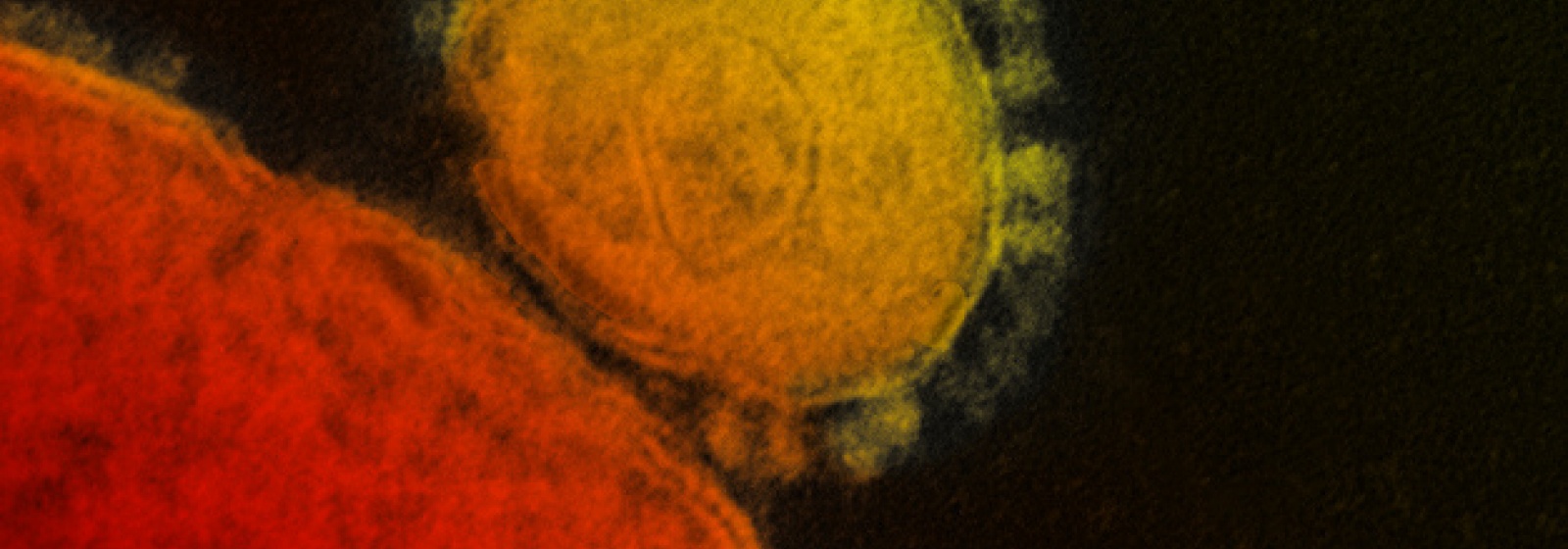In 2012, MERS-CoV (Middle East Respiratory Syndrome Coronavirus) was found in Saudi Arabia. The early labor symptoms caused by the viruse are similar to SARS (Severe Acute Respiratory Syndrome). Therefore, MERS-CoV is also known as a “SARS-like” virus. So, what are the characteristics of a virus similar to SARS-CoV? I will introduce it to you below.
Overview of MERS-CoV
Similar to other coronaviruses, MERS-CoV is also round or oval and is a single-stranded positive-strand RNA virus. The Coronavirus family contains four types, which are α, β, γ and δ. Among them, MERS-CoV belongs to β class. It has a close relationship with pipistrellus bat coronavirus HKU5 (Bat-CoV HKU5). The virus has an envelope on its surface, with a genome of 30 kb in length, containing four major structural proteins, spikes (S), membranes (M), envelopes (E), and nucleocapsids (N). The virus mainly invades the ciliated epithelial cells of the respiratory tract, and the mortality rate is high. There have also been cases of human-to-human transmission. The clinical symptoms initially manifest as fever, coughs, chills, joint pain, and later the patient may become difficult to breathe. Its incubation period is usually 5 days, but the longest can reach 14 days.
Pathogenesis of MERS virus
Like SARS-CoV, the first step of MERS-CoV invasion into the body is to use the surface S protein and cell interaction to enter target cells. Namely, the S protein needs to bind to the receptor, which is also a key step for the virus to infect the host. Dipeptidyl peptidase-4 (DPP4) is mainly expressed in the human kidney, small intestine, liver, prostate epithelial cells and activated leukocytes, while MERS-CoV is also the first coronavirus to be identified with DPP4 as a receptor. After the virus binds to the receptor, various host proteases cleave the S protein and divide it into S1 and S2 subunits. Subsequently, the S protein is activated, and the virus and the target cell fuse into another cell. After entering the cell, the viral genomic RNA begins to translate the genes of the replicase, rep1a and rep1b, respectively, and the proteins they expressed are pp1a and pp1ab. Pp1a and pp1ab are then cleaved into nsp1 to nsp16 by proteases, and these nsps form a replication-transcription complex (RTC), thereby enabling RNA synthesis and mediating RNA replication and transcription of subgenomic RNA . Viral RNA then begins to replicate and transcribe. The N protein and RNA form the nucleocapsid, and envelope of the virus is obtained by budding the inner membrane of the cell between the endoplasmic reticulum and the Golgi apparatus. Eventually, the virus is expelled from the cells.
Treatment of MERS-CoV
- First, the most time-saving way in clinical treatment is to use drugs that have been clinically approved. Studies have shown that alisporivir combined with ribavirin can further enhance the effect of alisporivir on inhibiting MERS-CoV replication in vitro. Other studies have shown that the combination of interferon and ribavirin can inhibit the replication of MERS-CoV. By using drugs already in clinical use, the cost of developing new drugs can also be reduced.
- Second, protease inhibitors are a common idea in anti-virus research and development. As small molecule drugs, they can inhibit different aspects of the viral cycle. For example, lopinavir, which can inhibit proteinase M, can inhibit the activity of MERS-CoV in a low molar range; and teicoplanin, an inhibitor of cathepsin L, can block the entry of MERS-CoV into cells.
- Third, in addition to the above two drug treatment ideas, antiviral peptides and RNA interference are also two aspects worth considering. Studies have shown that the two peptides HR1P and HR2P can infect the fusion of virus and host cell membranes. In the study of SARS-CoV, it was found that the combined use of S protein siRNA and SARS open reading frame 1 can reduce SARS-CoV infection.
- Fourth, an effective vaccine is very important for the prevention and treatment of MERS-CoV. Because receptor-binding domain (RBD) in the S protein in MERS-CoV plays a key role in mediating virus-receptor binding, it is an important target for developing a MERS-CoV vaccine. At present, there are many vaccines against RDB, such as nanoparticles and virus-like particles (VLP). It was found in a study that a soluble RBD vaccine produced a strong immune response in mice, and a virus-like particle vaccine expressing RBD of MERS-CoV was injected into the mice, and the mice also produced specific antibodies and immune response.
In addition, it is a good idea to make monoclonal antibodies to RBD protein. Studies have shown that this class of monoclonal antibodies can neutralize MERS-CoV in vitro.
Creative Biolabs is a leading service provider covering the entire antibody discovery and development process. We can provide you with coronavirus-related mouse/rabbit/human-derived recombinant antibodies, therapeutic antibodies and other related services to help your coronavirus drug development.
References:
[1] Schindewolf C, Menachery V D. Middle east respiratory syndrome vaccine candidates: cautious optimism[J]. Viruses, 2019, 11(1): 74.
[2] Chan J F W, Lau S K P, To K K W, et al. Middle East respiratory syndrome coronavirus: another zoonotic betacoronavirus causing SARS-like disease[J]. Clinical microbiology reviews, 2015, 28(2): 465-522.
[3] Liang R, Wang L, Zhang N, et al. Development of small-molecule MERS-CoV inhibitors[J]. Viruses, 2018, 10(12): 721.

